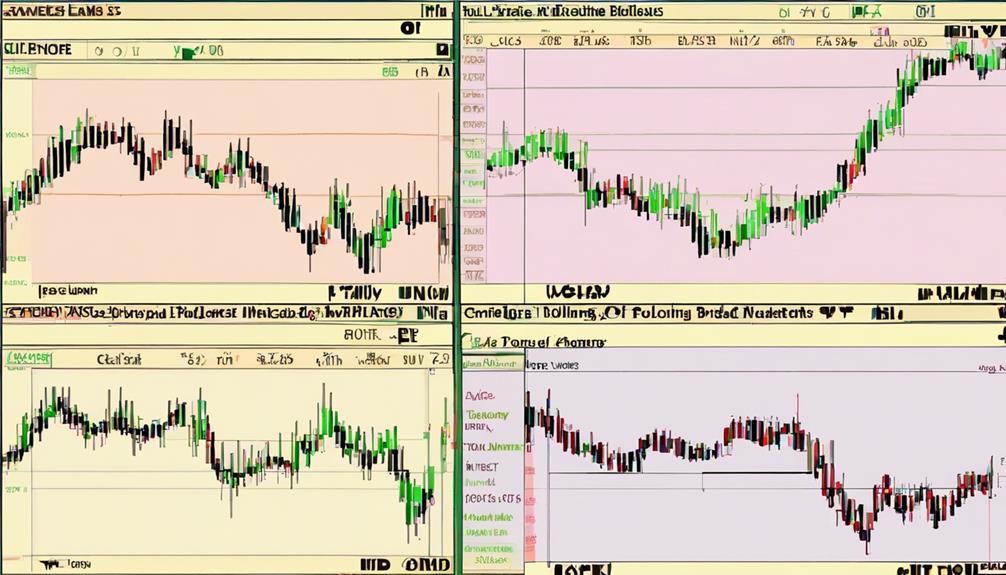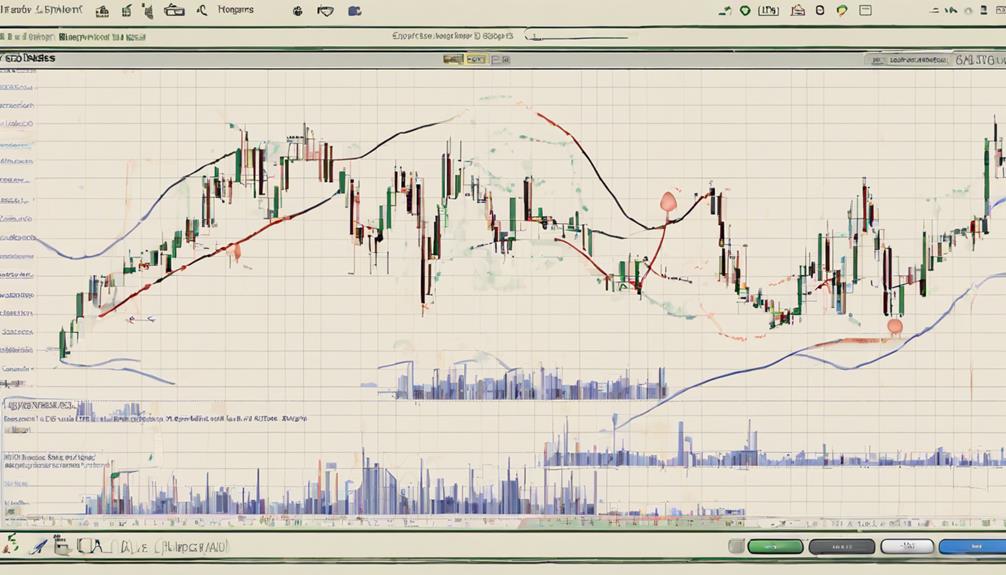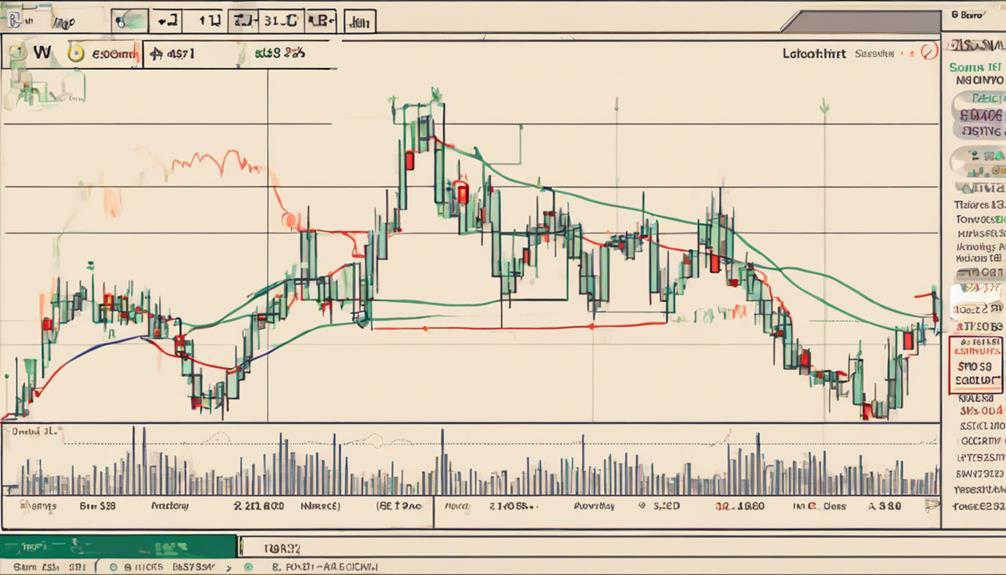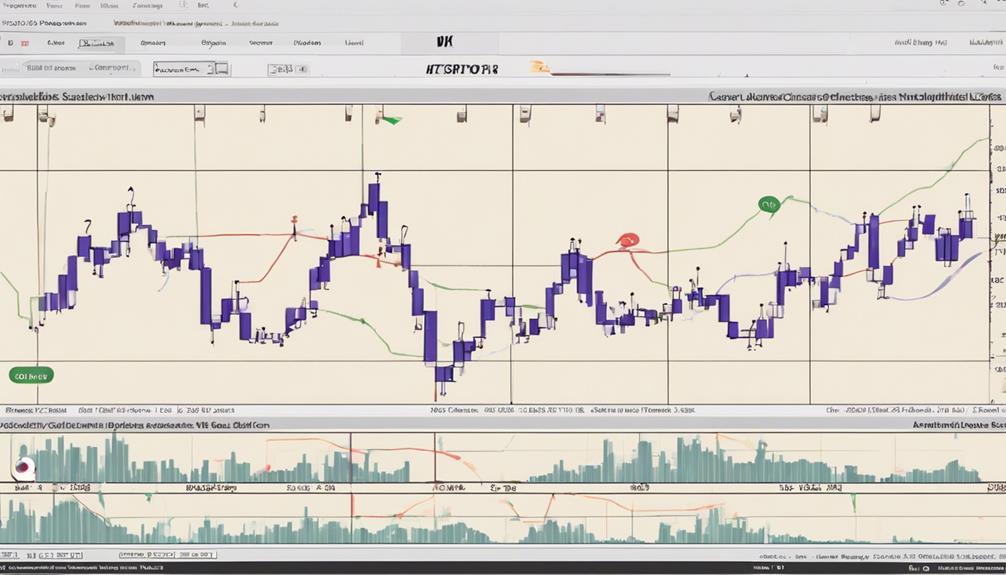Imagine embarking on a journey through the intricate world of trend following indicators, akin to deciphering the clues on a treasure map. These tools serve as beacons guiding you through the tumultuous waters of the market, offering insights into potential profit opportunities.
As you begin to unravel the complexities of these indicators, a clearer path to successful trading emerges. But how exactly do these indicators work, and what key principles should you keep in mind to navigate this terrain effectively?
Importance of Trend Indicators
Utilizing trend indicators significantly enhances traders' ability to identify and capitalize on market trends by providing objective signals based on historical price data. These technical indicators, such as moving averages, assist traders in filtering out noise and focusing on significant price movements that align with the trend.
By effectively using these tools, traders can reduce risk and improve their decision-making process when implementing trend-following strategies in financial markets. Moving averages, RSI, MACD, and Bollinger Bands are popular indicators that offer valuable insights into price trends, aiding traders in determining optimal entry and exit points for trades.
Understanding the importance of trend indicators is crucial for traders looking to navigate markets successfully and optimize their trading outcomes.
Types of Trend Following Indicators

Moving averages, Relative Strength Index (RSI), Moving Average Convergence Divergence (MACD), and Bollinger Bands are prominent types of trend following indicators utilized by traders to analyze and interpret market trends efficiently.
Moving Average Crossover is a common strategy where short-term moving averages cross above or below long-term moving averages to signal potential trend shifts.
RSI helps identify overbought or oversold conditions, informing traders about possible price reversals.
MACD combines moving averages to detect changes in momentum, aiding in pinpointing entry and exit points.
Bollinger Bands offer insights into market volatility and potential trend reversals, guiding risk management techniques for trend followers.
When used together, these indicators enhance trend following strategies by confirming trends and optimizing entry and exit decisions based on trend lines.
Key Components of Trend Indicators

Key components of trend indicators encompass essential tools like moving averages, RSI, MACD, and Bollinger Bands that play a crucial role in determining market trends and potential shifts. These components are vital for analyzing trend direction, identifying overbought or oversold conditions, recognizing trend changes, and understanding momentum shifts.
- Moving averages track price over a specific period to determine trend direction.
- RSI measures the strength of price movements to identify overbought or oversold conditions.
- MACD combines moving averages to signal trend changes and momentum shifts.
- Bollinger Bands use volatility to show overbought and oversold levels in a market trend.
Interpreting Trend Indicator Signals

To effectively interpret trend indicator signals, traders must analyze specific criteria such as moving averages crossing over or the Relative Strength Index (RSI) reaching extreme levels.
Using technical analysis tools like Moving Average Convergence Divergence (MACD) and Bollinger Bands can help confirm trend direction and potential market reversals. The MACD signals shifts in market direction when its line crosses the signal line, while Bollinger Bands indicate overbought or oversold conditions.
Utilizing Trend Indicators in Trading

Considering the significance of trend indicators in technical analysis, incorporating these tools effectively can enhance your trading decisions and overall strategy. When utilizing trend indicators in trading, remember the following key points:
- Confirmation of Trends: Trend indicators like moving averages help confirm market trends, providing you with a clear direction to follow.
- Entry and Exit Signals: Utilize indicators such as RSI and MACD to identify optimal entry and exit points based on overbought or oversold conditions and momentum shifts.
- Managing Risk: Bollinger Bands can assist in visualizing price volatility, aiding in risk management by highlighting potential trend reversals.
- Implementing Trend-Following Strategies: Incorporate trend indicators effectively to develop and execute robust trend-following strategies that align with market trends.
Are the Fundamentals of Trend Following Indicators the Same as the ABCs of Trend Following Indicators?
When it comes to understanding trend following indicators, the fundamentals are essentially the ABCs of trend following indicators. Both serve as the building blocks for recognizing and interpreting market trends. Whether you’re a novice or an experienced trader, grasping these basic principles is essential for successful trading.
Frequently Asked Questions
What Is Trend Following Indicator?
A trend following indicator is a tool that helps you identify the direction of a market trend by analyzing historical price data. Common indicators include moving averages, RSI, MACD, and Bollinger Bands, crucial for informed trading decisions.
What Is the Indicator for Determining Trend?
To determine a trend, focus on the Moving Average Convergence Divergence (MACD) indicator. It compares moving averages through fast and slow lines, signaling trend changes. MACD crossovers pinpoint potential reversals or confirm existing trends effectively.
What Is the Indicator of a Trend?
Identifying the indicator of a trend means recognizing tools like moving averages, RSI, MACD, and Bollinger Bands. These indicators analyze historical price data to reveal market direction. Understanding them helps you navigate trends effectively for informed trading decisions.
How Do You Learn Trend Following?
To learn trend following, start by understanding indicator basics. Analyze historical data, practice with moving averages, RSI, MACD, and Bollinger Bands. Backtest various combinations on past trends. Adapt and learn continuously for mastery.
Conclusion
In conclusion, mastering trend-following indicators is like navigating a ship through turbulent waters – with the right tools and knowledge, you can steer towards profitable opportunities while avoiding potential pitfalls.
By incorporating these indicators into your trading strategy, you can harness the power of market trends to your advantage and stay ahead of the curve.
Remember, in the world of trading, understanding and utilizing trend indicators is key to achieving success.


